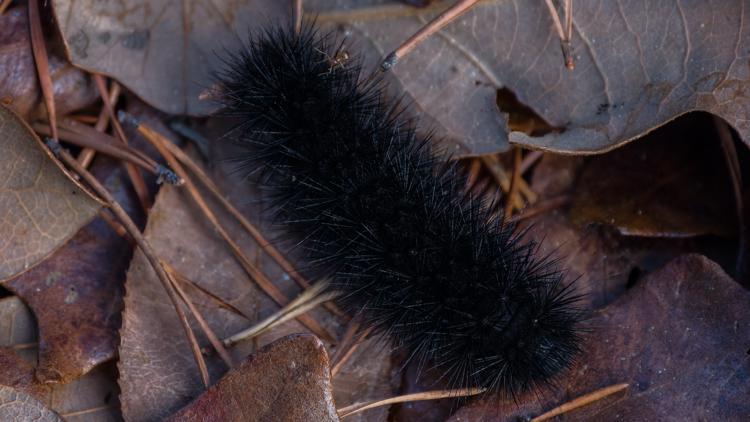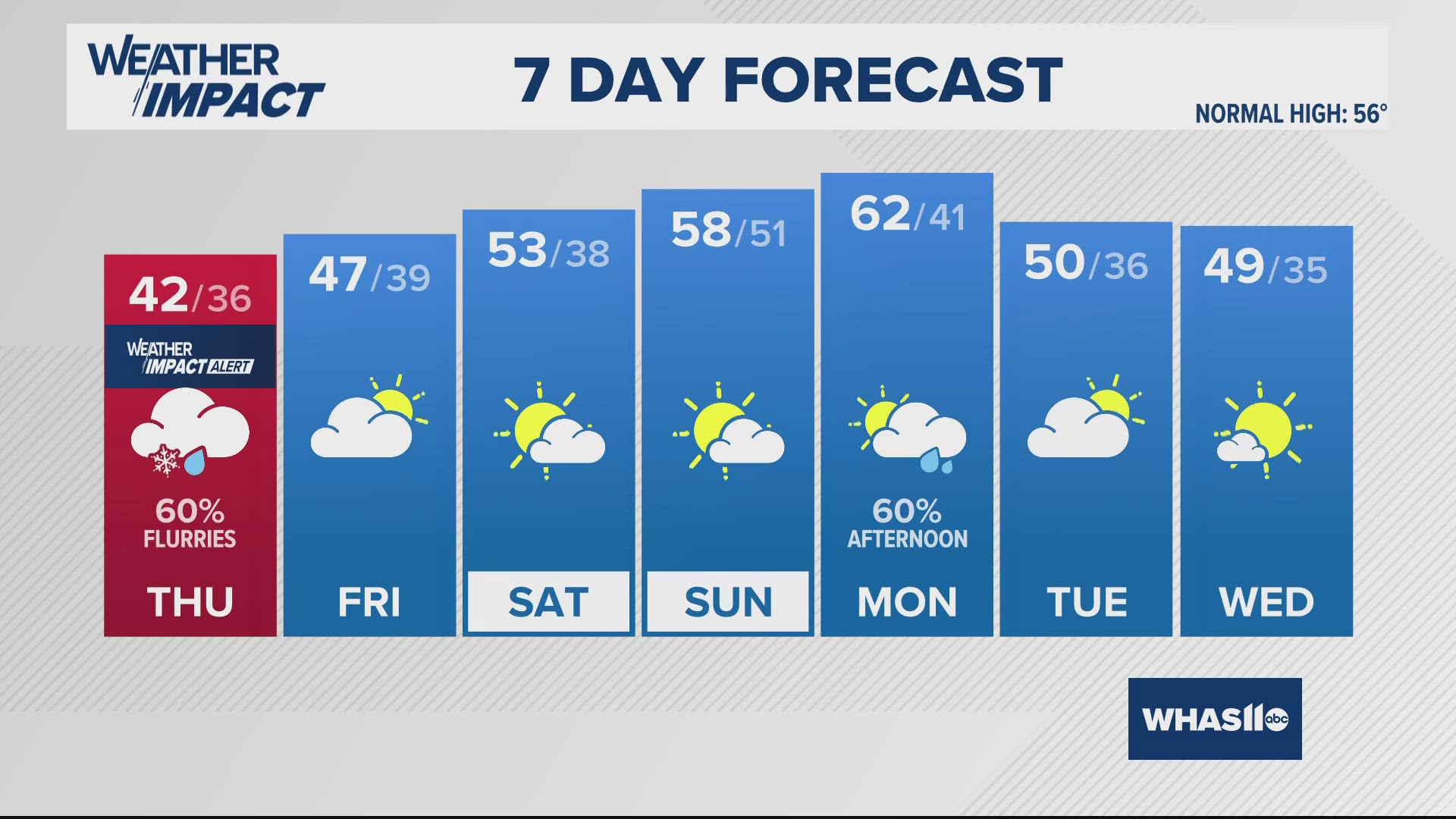LOUISVILLE, Ky. — Danielle Dingess was shocked to find an all-black caterpillar at her home in the Okolona/Highview area while waiting for a delivery earlier this week.
"Uh oh," she wrote in a post on WHAS11's Kentucky/Indiana Cloud Watchers Facebook group. "Solid black woolly worm...think [they] say solid black means a bad winter."
Interestingly, these little creatures can be responsible for predicting what kind of winter you can expect in central Kentucky and southern Indiana.
The color of a woolly bear, often called a woolly worm, and its winter prediction is an old legend similar to the Farmer's Almanac.
But just how accurate are they in predicting Kentuckiana's winter season?

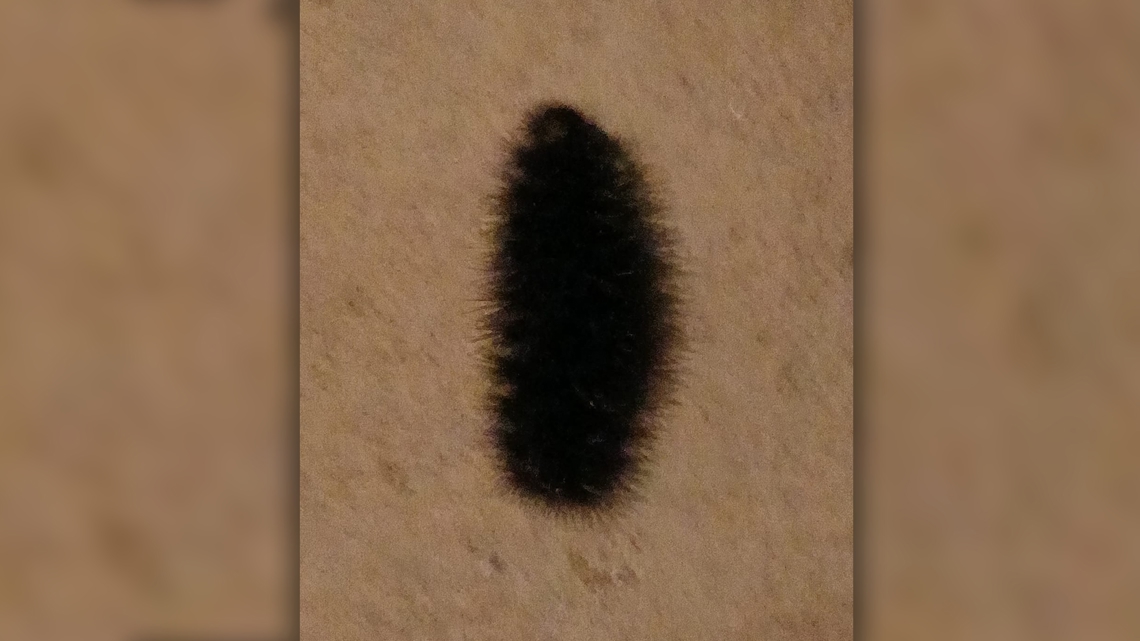
Woolly worms are a type of caterpillar native to the United States and much of southern Canada. They're usually brown in the mid-section and have black colored stipes on the front and back of the larvae.
Danielle's right about the legend, all-black woolly worms would mean that winter in the Ohio Valley will be colder and snowier than normal.
If you find an all-brown woolly worm, that would indicate a drier, more mild winter with minor snowfall is ahead.
And then there's the variations of everything in-between. Generally, more orange and brown woolly worms make for a mild and dry winter, which is bad news for snow lovers!

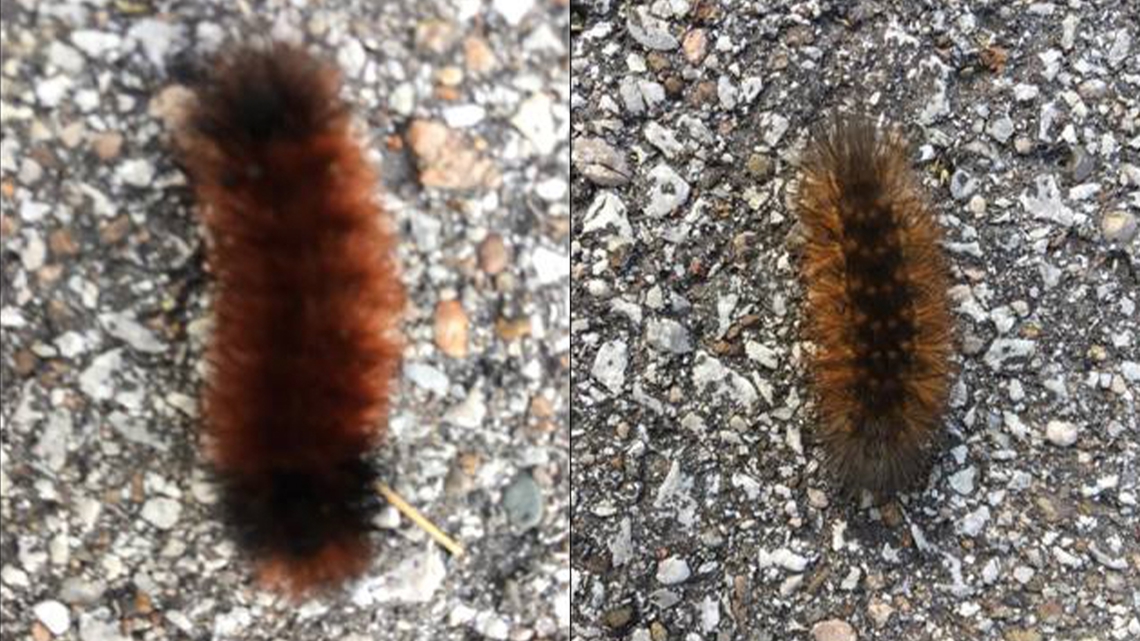
While the woolly worm that Danielle spotted hints at a harsh, cold and snowy winter in our future -- we'll still need to actually wait and see if that holds true!
What is for certain is that the coloring doesn't correlate with the current forecast from the National Oceanic and Atmospheric Administration (NOAA).
What to expect this winter: Snow? Rain?
The Climate Prediction Center (CPC) is a branch of NOAA and has its own set of meteorologists who provide temperature precipitation outlooks and forecasts for the U.S.
So far, the CPC's winter forecast has central Kentucky and southern Indiana outlined in "at or above normal" temperatures this winter.
The forecast could have some minor changes and fluctuations, but this is how it is shaping up for now.

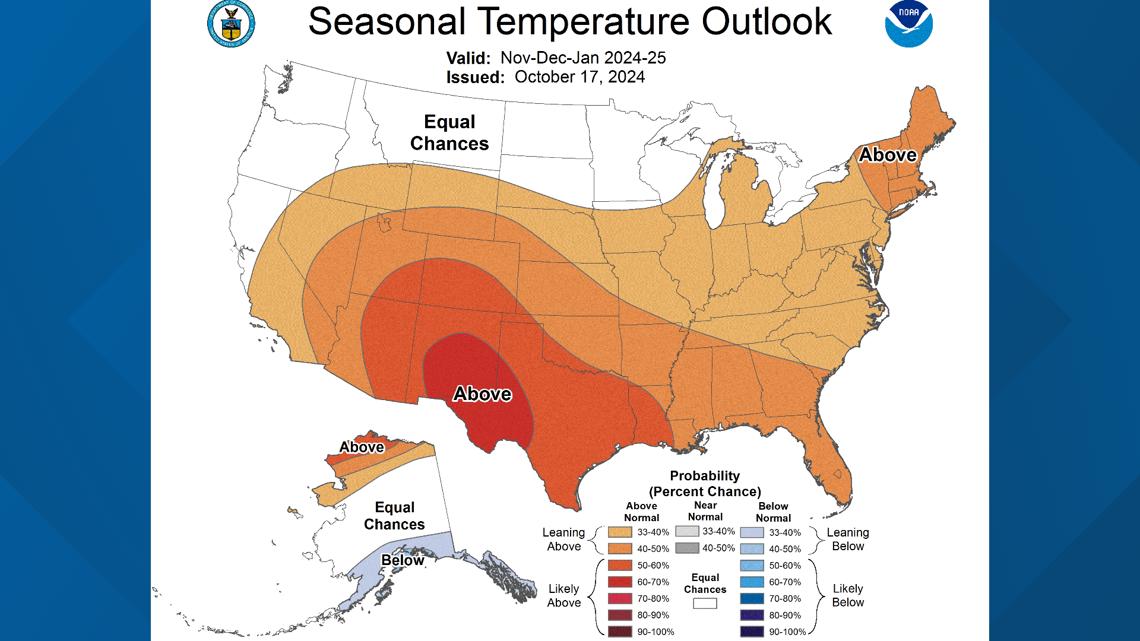
Therefore, we can expect more rain and thunderstorms as opposed to winter storm systems across the Ohio Valley.

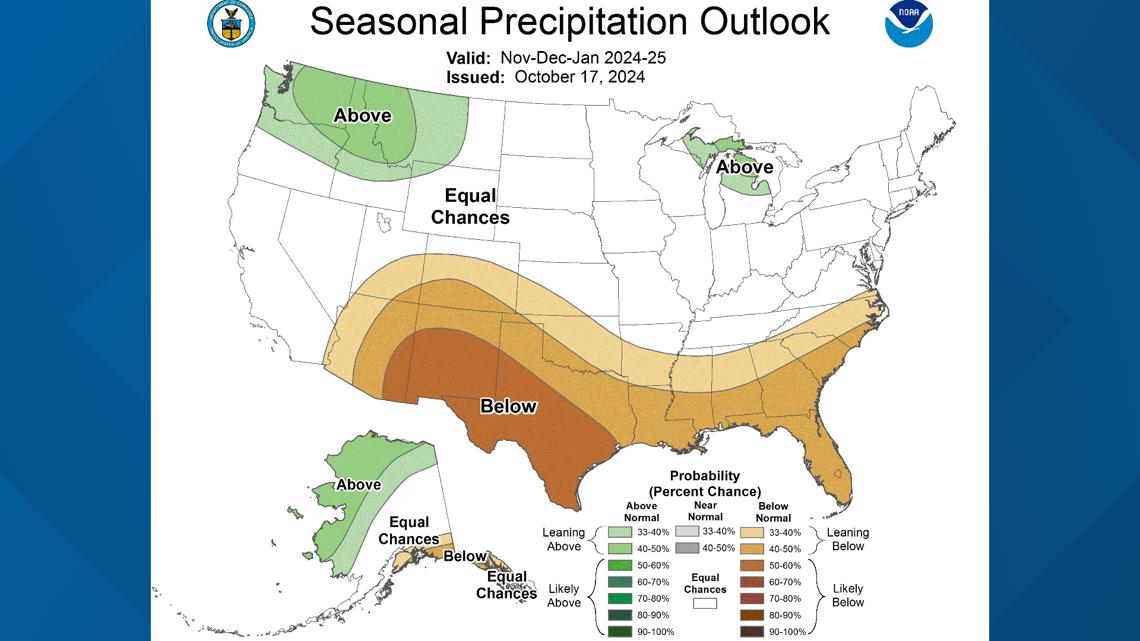
Again, the day-by-day and week-by-week forecast can change over the next few months, but a warm and relatively dry trend is expected locally.
Whose forecast do you want to believe? That's up to you! Get the latest from the WHAS11 Weather Impact Team here.
Make it easy to keep up-to-date with more stories like this. Download the WHAS11 News app now. For Apple or Android users.
Have a news tip? Email assign@whas11.com, visit our Facebook page or X feed.


